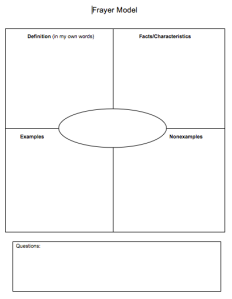 Most parents are aware of the need to begin reading to their children early in order to lay a good foundation for formal education in reading (literacy). However, fewer parents are aware of the importance of laying a good foundation with numbers (numeracy). Learning to count, to say the numbers in order correctly is a great start, but only a beginning! Here are some other things to do to build that important math foundation:
Most parents are aware of the need to begin reading to their children early in order to lay a good foundation for formal education in reading (literacy). However, fewer parents are aware of the importance of laying a good foundation with numbers (numeracy). Learning to count, to say the numbers in order correctly is a great start, but only a beginning! Here are some other things to do to build that important math foundation:
• Count everything! Children need to know that the numbers relate to things no matter their size – that the number tells how many. Count blocks, forks, steps, socks, noodles, etc. Count forward and backward.
• Sing counting songs, recite counting rhymes, and read books with numbers in them. Some song and rhymes are well known, like “One, Two, Buckle my Shoe”, “The Ants Go Marching”, and “Ten in the Bed”. But if you need more inspiration, there are lots of counting songs on YouTube that you can access. Look for books that have numbers in them such as Canada 1, 2, 3; How Many Feet in the Bed?; The Doorbell Rang, and Bean Thirteen, just to name a few.
• Use dice (with spots, not numbers), dominoes, and playing cards to look at visual arrangements of numbers (have you noticed the arrangements of hearts, diamonds, spades, and clubs on playing cards?). Recognizing five as it is shown on a dice or nine as it is shown on a domino is a helpful skill as children begin to manipulate numbers.
• Look for numbers in the environment and talk about them: look for them on signs, on buildings, on phones, on remotes, etc. Don’t just throw away junk mail and flyers – have your children use them as number search pages (for example, put a circle around each 7 that you find).
• Practice skip counting with children. Count by 2’s, by 5’s and by 10’s. Be sure to practice counting past 100. Although 100 seems a natural place to stop, children need to hear how the counting sequence goes beyond that, so keep going!
• Compare things. Describe things as longer, shorter, heavier or lighter. Compare containers to discover which hold more, which hold less. Line up cereal boxes or cans of vegetables from tallest to shortest.
• Talk about time. What time do you eat lunch each day? What time is bedtime? For how many seconds can each person hold his breath?
• Estimate things. How many steps do you think it will take to walk from the car to the store’s door? How many glasses of water will fit into the pitcher? How many minutes will it take to read this story?
• Identify shapes, both 2-dimensional and 3-dimensional. Don’t be afraid to use words like rhombus, hexagon, pyramid, and sphere with young children. They love learning names of dinosaurs that are 27 syllables long (ok, maybe that is an exaggeration!) so using appropriate geometric terms is not a problem.
• Sort things. Sort buttons, clothes, blocks, etc. Find a rule that can be used for sorting and then sort by it. For buttons, you might sort by colour, by size, or by the number of holes. Sort crayons by color families. Sort blocks by geometric shapes. You can have just 2 sorting piles (for instance, socks are white or not white) or multiple sorting piles.
• Make patterns. Use any items around the house to arrange in patters. You might make patterns with silverware: fork, spoon, fork, spoon, fork, spoon. You might make patterns with sounds: clap, clap, snap, clap, clap, snap, clap, clap, snap. You can draw patterns, too. Consider starting any kind of pattern and having your child continue it. Go on a pattern hunt in the house. Clothes, floors, and walls are great places to find patterns.
There are many wonderful ways to build a math foundation with your child. I hope you will try some of these ideas soon!
Mathematically yours,
Carollee
 For those of you teaching decimals, here is a sheet you might make use of to have your students represent the decimals in a variety of ways. The separate place value part at the bottom allows students to visually see the relative size of each of the place values in tenths, hundredths, and thousandths. In using it in a classroom here in my school district I was surprised how challenging it was for students to actually fill in — which of course means we are surfacing misunderstandings or lack of understanding in the students.
For those of you teaching decimals, here is a sheet you might make use of to have your students represent the decimals in a variety of ways. The separate place value part at the bottom allows students to visually see the relative size of each of the place values in tenths, hundredths, and thousandths. In using it in a classroom here in my school district I was surprised how challenging it was for students to actually fill in — which of course means we are surfacing misunderstandings or lack of understanding in the students.




